| |||||
| Centuries: | |||||
|---|---|---|---|---|---|
| Decades: | |||||
| See also: | List of years in Portugal | ||||
Events in the year 1889 in Portugal .
| |||||
| Centuries: | |||||
|---|---|---|---|---|---|
| Decades: | |||||
| See also: | List of years in Portugal | ||||
Events in the year 1889 in Portugal .
| | This section is empty. You can help by adding to it. (October 2012) |
| | This section is empty. You can help by adding to it. (October 2012) |
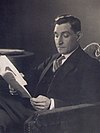

Manuel I, known as the Fortunate, was King of Portugal from 1495 to 1521. A member of the House of Aviz, Manuel was Duke of Beja and Viseu prior to succeeding his cousin, John II of Portugal, as monarch. Manuel ruled over a period of intensive expansion of the Portuguese Empire owing to the numerous Portuguese discoveries made during his reign. His sponsorship of Vasco da Gama led to the Portuguese discovery of the sea route to India in 1498, resulting in the creation of the Portuguese India Armadas, which guaranteed Portugal's monopoly on the spice trade. Manuel began the Portuguese colonization of the Americas and Portuguese India, and oversaw the establishment of a vast trade empire across Africa and Asia. He was also the first monarch to bear the title: By the Grace of God, King of Portugal and the Algarves, this side and beyond the Sea in Africa, Lord of Guinea and the Conquest, Navigation and Commerce in Ethiopia, Arabia, Persia and India.

DomManuel II, "the Patriot" or "the Unfortunate", was the last King of Portugal, ascending the throne after the assassination of his father, King Carlos I, and his elder brother, Luís Filipe, the Prince Royal. Before ascending the throne he held the title of Duke of Beja. His reign ended with the fall of the monarchy during the 5 October 1910 revolution, and Manuel lived the rest of his life in exile in Twickenham, Middlesex, England.

DomCarlos I, known as the Diplomat, the Martyr, and the Oceanographer, among many other names, was King of Portugal from 1889 until his assassination in 1908. He was the first Portuguese king to die a violent death since King Sebastian in 1578.

Afonso, Hereditary Prince of Portugal was the heir apparent to the throne of Portugal. He was born in Lisbon, Portugal, and died in a horse-riding accident on the banks of the river Tagus.

The Most Serene House of Braganza, also known as the Brigantine dynasty, is a dynasty of emperors, kings, princes, and dukes of Portuguese origin which reigned in Europe and the Americas.

Carlos Arias Navarro, 1st Marquis of Arias-Navarro was one of the best-known Spanish politicians during the Francoist regime.
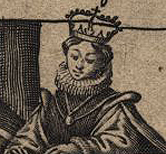
Constanza Manuel of Villena, was a Castilian noblewoman who by her two marriages was Queen consort of Castile and León and Infanta of Portugal.
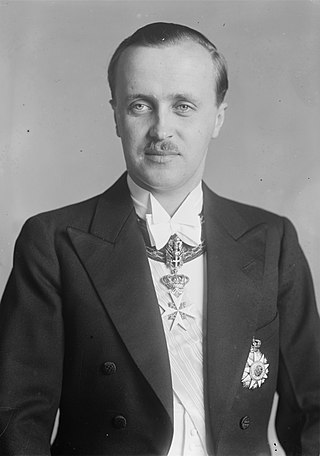
DomDuarte Nuno, Duke of Braganza was the claimant to the defunct Portuguese throne, as both the Miguelist successor of his father, Miguel Januário, Duke of Braganza, and later as the head of the only Brigantine house, after the death of the last ruling Braganza, King Manuel II of Portugal. In 1952, when the Portuguese Laws of Banishment were repealed, the Duke moved his family to Portugal, thus returning the Miguelist Braganzas to their homeland and becoming the first of the former Portuguese royal dynasty to live in Portugal since the abolition of the monarchy, in 1910.
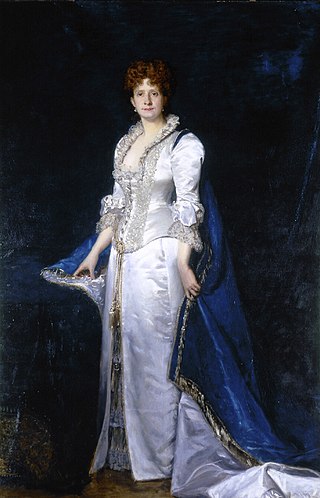
Dona Maria Pia was by birth an Italian princess of the House of Savoy and was Queen of Portugal as spouse of King Luís I of Portugal. On the day of her baptism, Pope Pius IX, her godfather, gave her a Golden Rose. Maria Pia was married to Luís on the 6 October 1862 in Lisbon. She was the grand mistress of the Order of Saint Isabel. She was the third queen of the House of Savoy on the Portuguese throne, after Mafalda and Marie-Françoise of Savoy-Nemours.

The House of Braganza-Saxe-Coburg and Gotha is a term used to categorize the last four rulers of the Kingdom of Portugal, and their families, from 1853 until the declaration of the republic in 1910. Its name derives from the four kings descended in a patrilineal line from King Ferdinand II of Portugal and in a matrilineal line from Queen Maria II of Portugal.
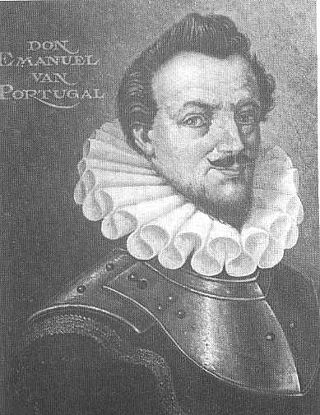
Manuel of Portugal was the illegitimate son of António, Prior of Crato, pretender to the Portuguese throne during the 1580 Portuguese succession crisis. He secretly married in 1597 Countess Emilia of Nassau, daughter of William the Silent and Anna of Saxony.

Dona Maria Amélia was the last Queen consort of Portugal as the wife of Carlos I of Portugal. She was regent of Portugal during the absence of her spouse in 1895.

The Pantheon of the House of Braganza, also known as the Pantheon of the Braganzas, is the final resting place for many of the members of the House of Braganza, located in the Monastery of São Vicente de Fora in the Alfama district of Lisbon, Portugal. The pantheon's burials have included Portuguese monarchs, Brazilian monarchs, a Romanian monarch, queen consorts of Portugal, and notable Infantes of Portugal, among others.
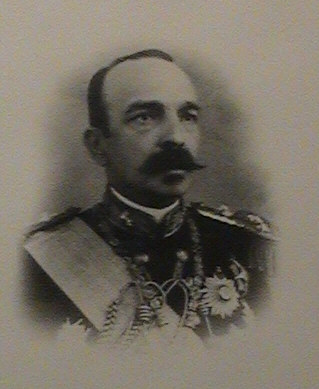
Sebastião Custódio de Sousa Teles, also known as Sebastião Teles, Sousa Teles, or in contemporary Portuguese as Sousa Telles, was a Portuguese politician and military officer. After a career in military logistics and education, he served multiple times as Minister of War, and briefly as President of the Council of Ministers from 11 April to 14 May 1909 during the penultimate year of the Portuguese constitutional monarchy.
Events that happened in the year 1838 in Portugal.
Events in the year 1883 in Portugal.

Events in the year 1917 in Brazil.
Manuel Guerra was a Portuguese sports shooter. He competed at the 1924 Summer Olympics and the 1932 Summer Olympics.